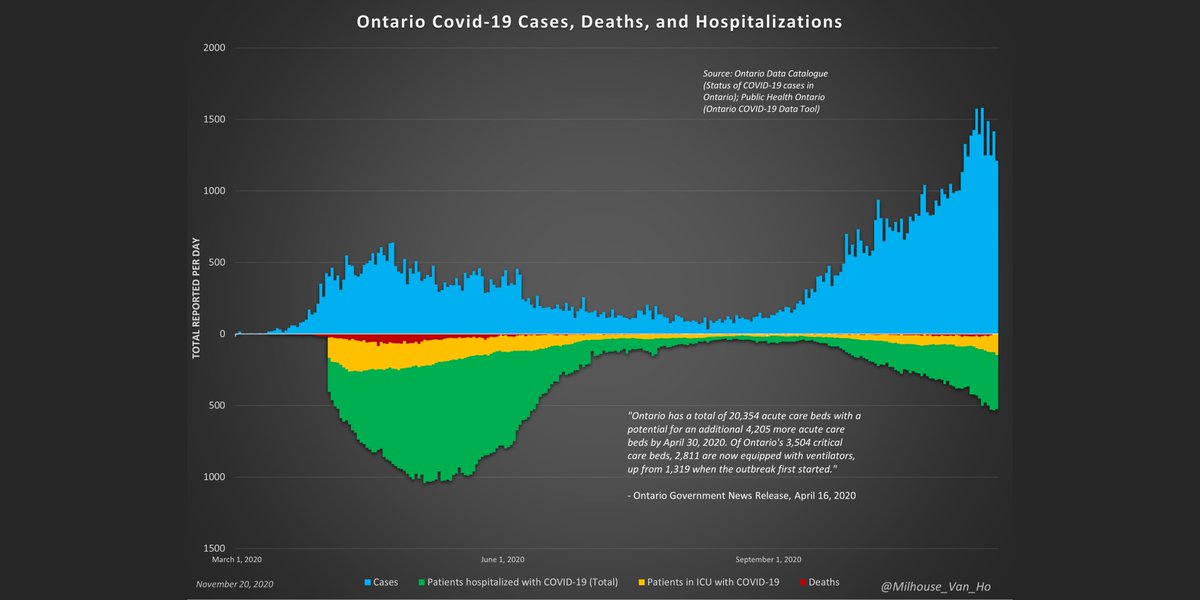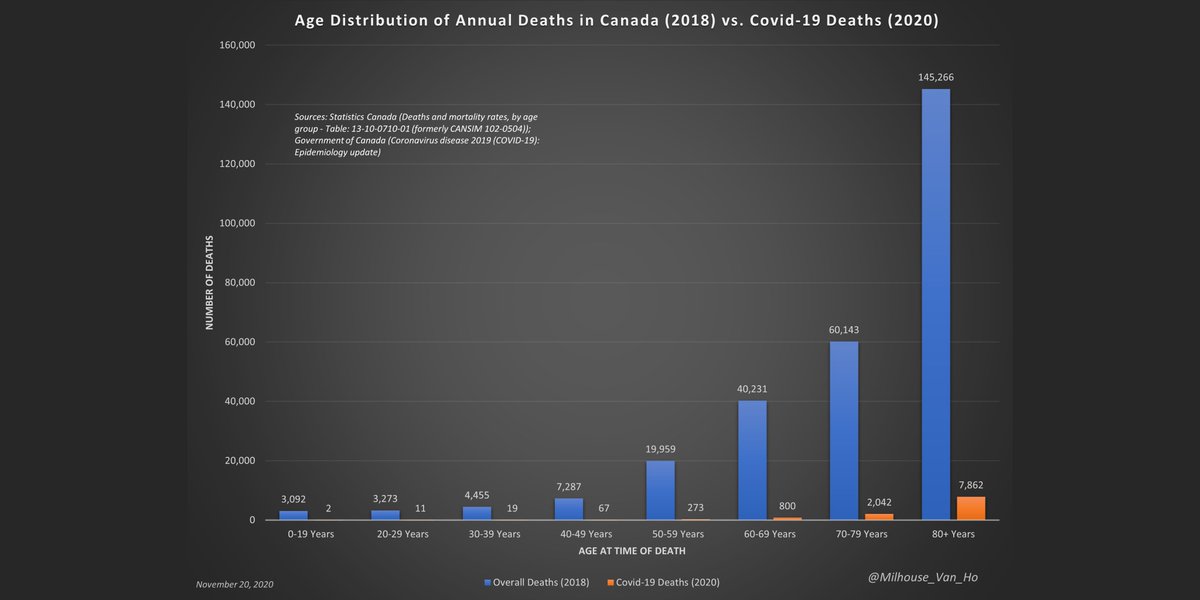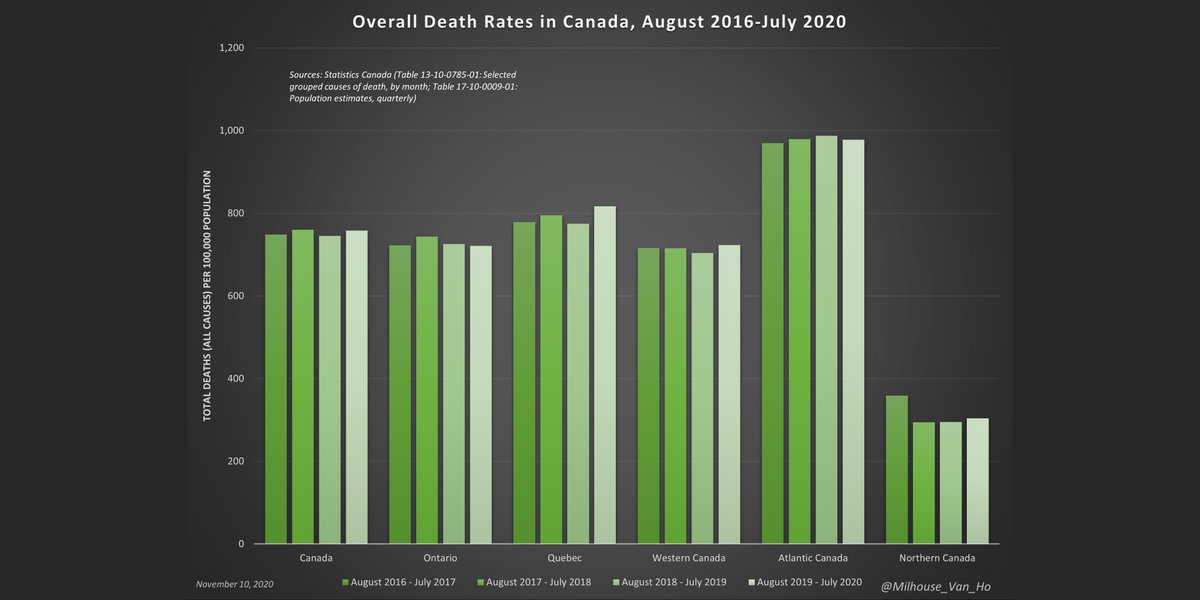
November 20 – Ontario weekly update
Data is 100% public and official, and fully cited.
#COVID19Canada #COVID19Ontario #COVID19Toronto #COVID19Ottawa



Data is 100% public and official, and fully cited.
#COVID19Canada #COVID19Ontario #COVID19Toronto #COVID19Ottawa




Ontario - Covid-19 still presents a risk primarily to the elderly, not to children and hardly to working-age adults.
(n.b. Based on 2020 YTD data for Covid-19 - figures to be revised.)
(n.b. Based on 2020 YTD data for Covid-19 - figures to be revised.)

However, Covid-19 is often not a wholly distinct and separate cause of death as there are other medical conditions involved in many cases.
There are also cases in which it is not even a cause of death, but the individual had tested positive sometime prior to their death.
There are also cases in which it is not even a cause of death, but the individual had tested positive sometime prior to their death.

Ontario - The average age of a death by or with covid-19 is higher than life expectancy.
Deaths among those over 80 account for 69.3% of deaths by/with covid-19, but only 52.2% of all deaths (all causes) in 2018.
Deaths among those over 80 account for 69.3% of deaths by/with covid-19, but only 52.2% of all deaths (all causes) in 2018.
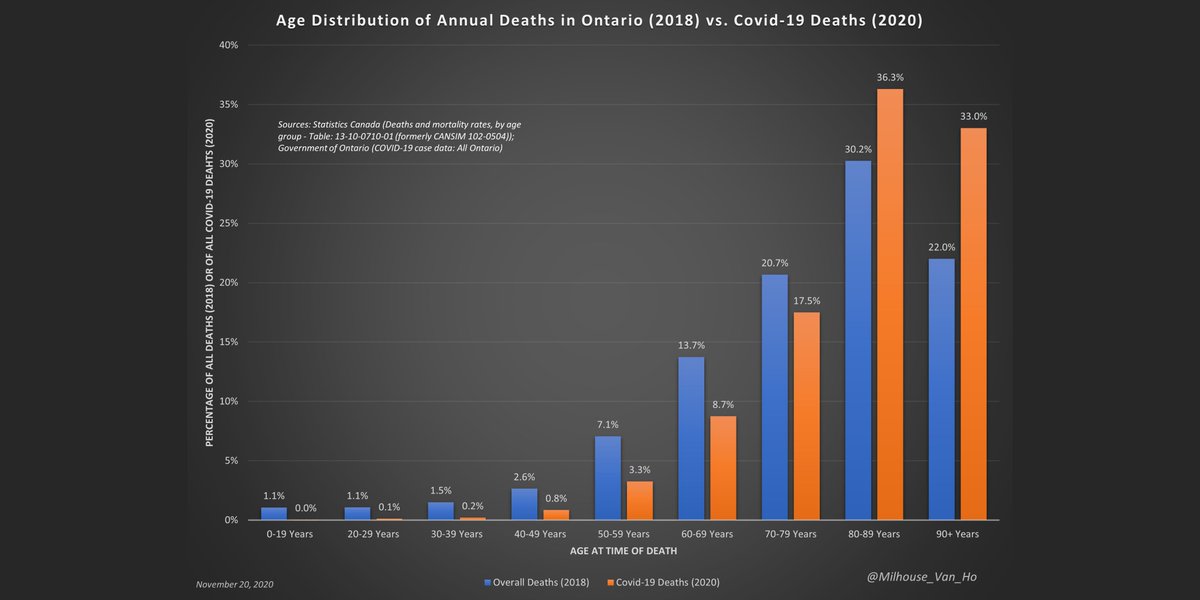
Ontario (population: 14,745,040):
Total deaths by/with covid-19: 3,443 (234 deaths per every million people in ON or 0.02%)
38.8% of Canadian population but 30.6% of Canada deaths by/with covid-19
Total deaths by/with covid-19: 3,443 (234 deaths per every million people in ON or 0.02%)
38.8% of Canadian population but 30.6% of Canada deaths by/with covid-19

Deaths in Ontario, 2015 - July 2020.
(n.b. Based on 2020 YTD data for Covid-19 - figures to be revised upward as needed.)
(n.b. Based on 2020 YTD data for Covid-19 - figures to be revised upward as needed.)

This is what 2020 might look like in Ontario month-to-month if:
1. All-cause deaths (excl. Covid-19) are in line with 2017-19 averages
2. All Covid-19 deaths are single-cause excess deaths
(n.b. Based on 2020 YTD data for Covid-19 - figures to be revised upward as needed.)
1. All-cause deaths (excl. Covid-19) are in line with 2017-19 averages
2. All Covid-19 deaths are single-cause excess deaths
(n.b. Based on 2020 YTD data for Covid-19 - figures to be revised upward as needed.)

Covid-19 has been a crisis in Ontario's long-term care (LTC) system vs. among the general public.
(n.b. Based on 2020 YTD data for Covid-19 - figures to be revised upward as needed.)
(n.b. Based on 2020 YTD data for Covid-19 - figures to be revised upward as needed.)

This is the number of deaths by/with covid-19 per million people, among both:
1. the general public, outside the long-term care (LTC) system
2. long-term care (LTC) residents
(n.b. Based on 2020 YTD data for Covid-19 - figures to be revised upward as needed.)
1. the general public, outside the long-term care (LTC) system
2. long-term care (LTC) residents
(n.b. Based on 2020 YTD data for Covid-19 - figures to be revised upward as needed.)

The two most important metrics to watch: deaths and ICU occupancy.
Ontario now reports:
- 146 in ICU (4.2% of max system capacity)
- 88 in ICU on a ventilator (3.1% of max system capacity)
Ontario now reports:
- 146 in ICU (4.2% of max system capacity)
- 88 in ICU on a ventilator (3.1% of max system capacity)

The number of hospitalizations linked to covid-19 in Ontario has generally not approached levels commonly observed for influenza and pneumonia, with even the April peak being comparable only to the summer lull. 
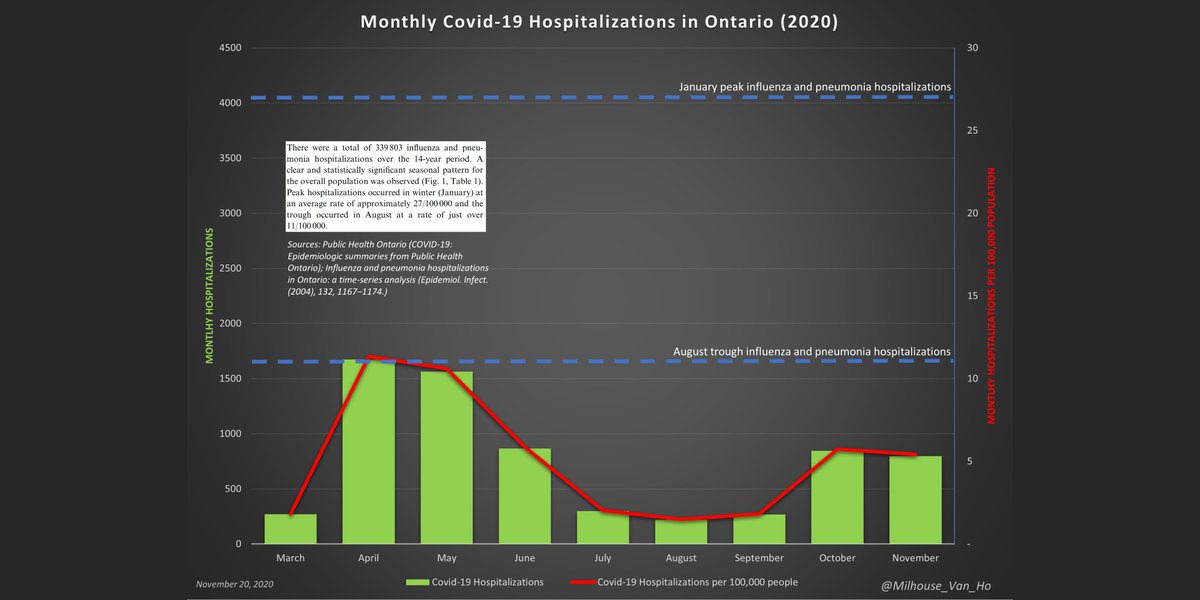
As data on daily new hospitalizations is not publicly available, this is the average daily net change in hospitalizations (ICU and non-ICU). 

A note on hospitalization data: This may include those who have had a positive test result after being hospitalized for a different reason. 

Ontario Fall/Winter season: May be able to declare a peak when average week-over-week growth reaches zero 

Greater Toronto and Ottawa account for 50.3% of Ontario’s population but 78.5% of Ontario deaths by/with covid-19.
Greater Toronto (population: 6,417,516 or 43.5% of Ontario):
Total deaths by/with covid-19: 2,340 (365 deaths per every million people in the region or 0.02%)
68.0% of Ontario deaths by/with covid-19
Total deaths by/with covid-19: 2,340 (365 deaths per every million people in the region or 0.02%)
68.0% of Ontario deaths by/with covid-19

City of Toronto (population: 2,731,571 or 18.5% of Ontario):
Total deaths by/with covid-19: 1,509 (552 deaths per every million people in Toronto or 0.05%)
43.8% of Ontario deaths by/with covid-19
Total deaths by/with covid-19: 1,509 (552 deaths per every million people in Toronto or 0.05%)
43.8% of Ontario deaths by/with covid-19

City of Ottawa (population: 1,006,210 or 6.8% of Ontario):
Total deaths by/with covid-19: 363 (361 deaths per every million people in Ottawa or 0.04%)
10.5% of Ontario deaths by/with covid-19
Total deaths by/with covid-19: 363 (361 deaths per every million people in Ottawa or 0.04%)
10.5% of Ontario deaths by/with covid-19

• • •
Missing some Tweet in this thread? You can try to
force a refresh

